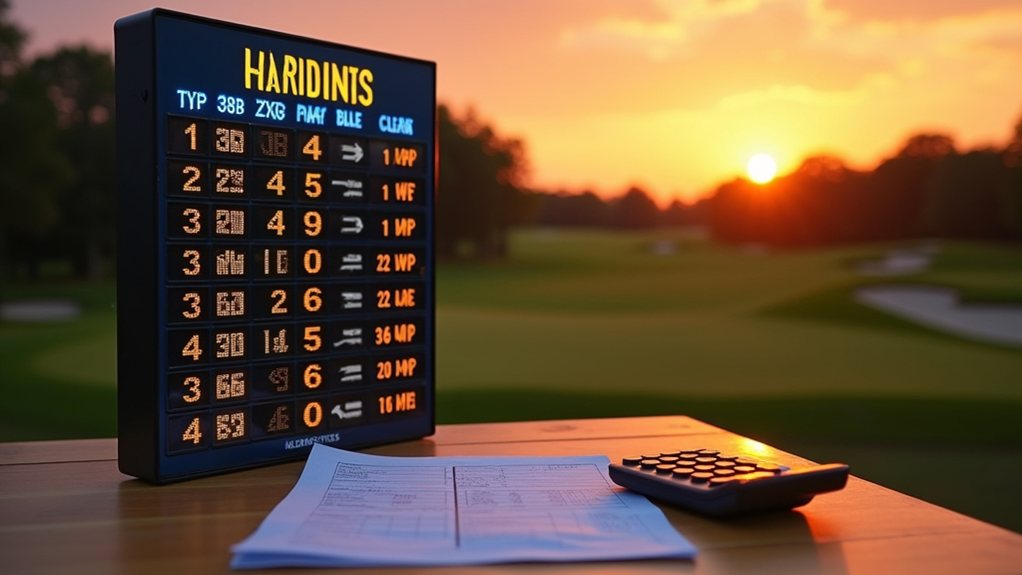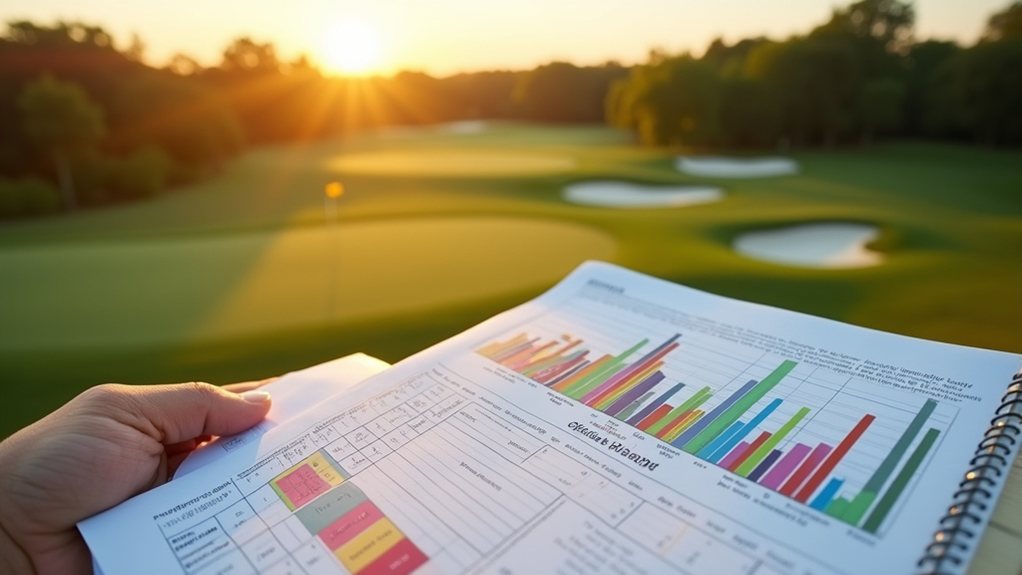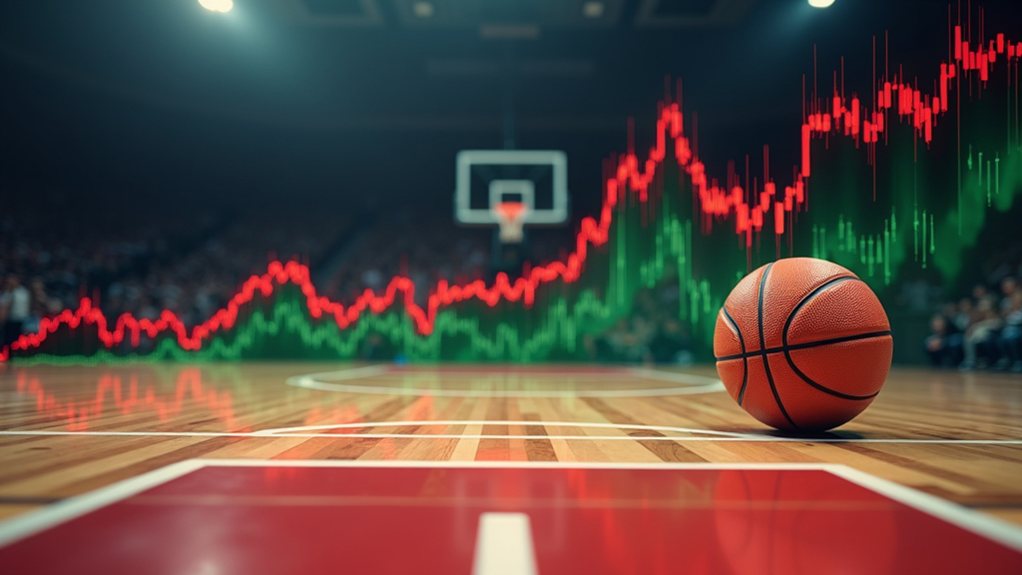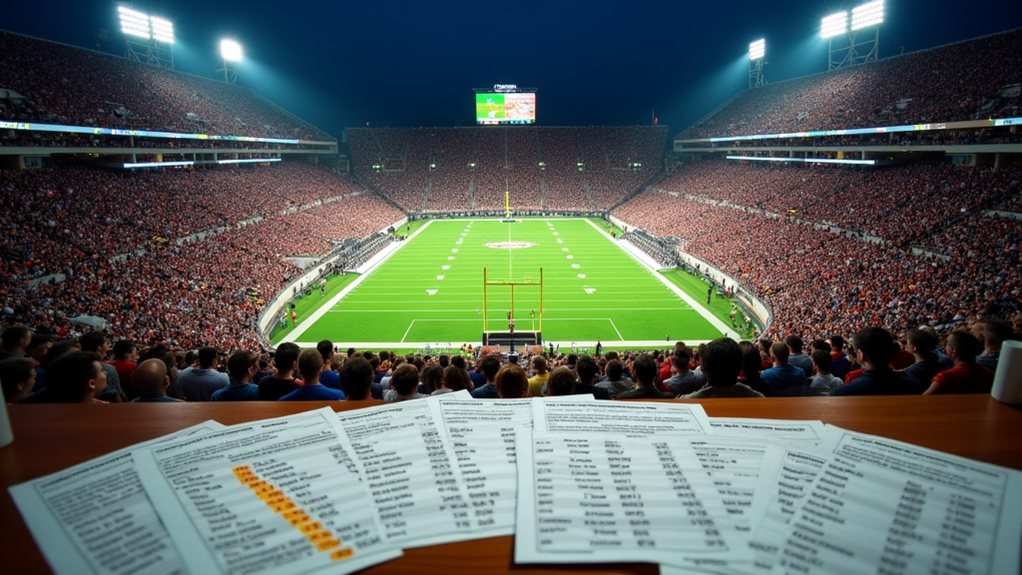Golf rankings serve as a powerful tool for bettors seeking an edge in the competitive wagering landscape. The Official World Golf Ranking (OWGR) directly influences how sportsbooks set their lines, creating potential value opportunities for astute bettors. Smart players recognize that rankings tell only part of the story, however. Our team of analysts, with over thirty years of combined experience, has developed a proven system for identifying when rankings misrepresent a player’s true potential. Uncover what the professionals know about converting rankings into profitable betting decisions.
The Mechanics Behind Official Golf Rankings

While many bettors focus solely on player performance, understanding the mechanics behind official golf rankings can give you a significant edge. The rankings aren’t random—they follow a strategic system based on strength of field ratings.
Major tournaments award higher points (100 for winners) than regular events (24 for winners). Rankings consider a two-year rolling period with recent performances weighted more heavily. Only tournaments from 23 recognized professional tours count toward rankings.
Players’ rankings are calculated by dividing total points by events played (minimum 40 events). Strokes Gained statistics provide deeper insight into player strengths across different aspects of the game. Top 50 players gain automatic entry into all major championships, creating significant career opportunities. Exploring outright winner bets can be more profitable when you understand how rankings impact tournament seeding. Rankings update every Monday, giving smart bettors fresh data for making informed wagers. Understanding a player’s ranking in conjunction with their course history can significantly improve your chances of making profitable bets.
How Rankings Influence Betting Odds and Lines

Golf rankings serve as the backbone of betting odds creation across sportsbooks worldwide. Bookmakers rely heavily on Official World Golf Rankings and Strokes Gained metrics when setting lines for tournaments.
Research confirms a strong correlation between a player’s ranking position and their betting odds, especially for elite competitors. A comprehensive study examining 19 major championships from 2018 to 2022 demonstrated that Pearson’s correlation test reveals the strongest relationship between OWGR position and betting markets.
- OWGR directly impacts odds for top-ranked players
- Strokes Gained statistics influence lines for lower-ranked golfers
- Recent performance can outweigh historical ranking data
- Course-specific skills create specialized betting opportunities
- Weather and tee times cause real-time odds adjustments
Smart bettors utilize these connections, identifying value by analyzing ranking systems alongside advanced metrics. For two-ball betting specifically, understanding player form and course history provides essential insights for predicting which golfer will perform better in a paired matchup. For the Masters tournament specifically, understanding Augusta National performance metrics provides critical insights that can reveal value opportunities among different player segments.
Finding Value Bets Through Ranking Analysis

How can bettors utilize golf rankings to find hidden gems in the betting market? The gold standard approach is identifying discrepancies between official rankings and betting odds.
Smart bettors look for players whose recent form suggests they’re undervalued by the market. Analyzing strokes gained data alongside tournament history reveals opportunities others miss.
Value lies in identifying golfers with strong recent metrics not yet reflected in betting markets
Our fifth decade of experience shows that course-specific performance often trumps general rankings. Combine OWGR positions with FedEx standings and money earned for superior insights.
Don’t miss out on under-the-radar players showing improved trends! These golfers frequently offer substantial value when their ranking metrics outperform their current betting odds.
Beyond the Numbers: When Rankings Can Mislead
When do rankings become a bettor’s worst enemy rather than an ally? Rankings can mislead those seeking betting value when they’re built on shaky foundations.
Industry experts have identified critical flaws in how courses are evaluated, creating traps for unwary bettors relying on these numbers.
- Inflated ratings based on historical reputation rather than current playability
- Subjective preferences of amateur raters skewing objective assessment
- Ranking inertia keeping overrated courses artificially high
- Inconsistent methodologies producing unreliable comparisons
- Mathematical scoring anomalies creating significant placement errors
Smart bettors look beyond rankings to find true value.
The gold standard approach combines ranking awareness with performance analytics, course-specific statistics, and player history.
Integrating Rankings With Course-Specific Performance Data
The savvy bettor knows that looking beyond basic rankings reveals hidden betting opportunities that others miss.
Smart handicappers combine standard golf rankings with course-specific data to identify value plays. A golfer’s performance often varies dramatically based on course fit – power hitters excel on longer layouts while precision players thrive on narrow, technical courses.
Our gold standard analysis shows that strokes gained metrics, when adjusted for course characteristics, provide superior predictive power.
Understanding how Strokes Gained statistics measure performance relative to the field across different aspects of the game can significantly enhance your betting strategy.
Don’t miss out on profitable opportunities by relying solely on general rankings! Successful bettors analyze how a player’s skill set matches specific course features before placing wagers.
FAQs
How Do Player Injuries Affect Golf Rankings and Betting Odds?
Player injuries cause temporary ranking drops as golfers miss tournaments. Betting odds lengthen for injured players while shortening for competitors, creating market volatility that savvy bettors can utilize for potential value opportunities.
Can Weather Conditions Nullify the Advantage of Higher-Ranked Players?
Yes, adverse weather conditions can markedly neutralize higher-ranked players’ advantages by creating unpredictable playing environments where specialized adaptability skills often outweigh standard technical proficiency that rankings typically measure.
Are Rankings More Reliable Predictors for Majors or Regular Tournaments?
Rankings typically prove more reliable for majors than regular tournaments, as elite players consistently enhance their performance for prestigious events while maintaining more variable form in standard competitions.
How Quickly Do Rankings Reflect a Player’s Dramatic Improvement?
Rankings reflect dramatic improvements weekly, with significant jumps occurring after major tournament wins or consistent high finishes. The 52-week rolling system prioritizes recent performances over past results.
Do Mental Factors Override Ranking Predictions in High-Pressure Tournaments?
Mental factors often override ranking predictions in high-pressure tournaments, as elite golfers with superior psychological resilience frequently outperform higher-ranked competitors who struggle with emotional control and pressure management.









